Long Tail Keywords
What Are Long Tail Keywords?
Long tail keywords are search terms with relatively low search volume and competition levels. Also, long tail terms tend to be longer in length (three to five or more) than most other keyword types.

Even though few people search for individual long tail queries, when you add them together, long tails actually make up a large chunk of all Google searches.

(And that’s especially true now that more and more people are using voice search)
In fact, one report states that 92% of all keywords get 10 or fewer searches per month.
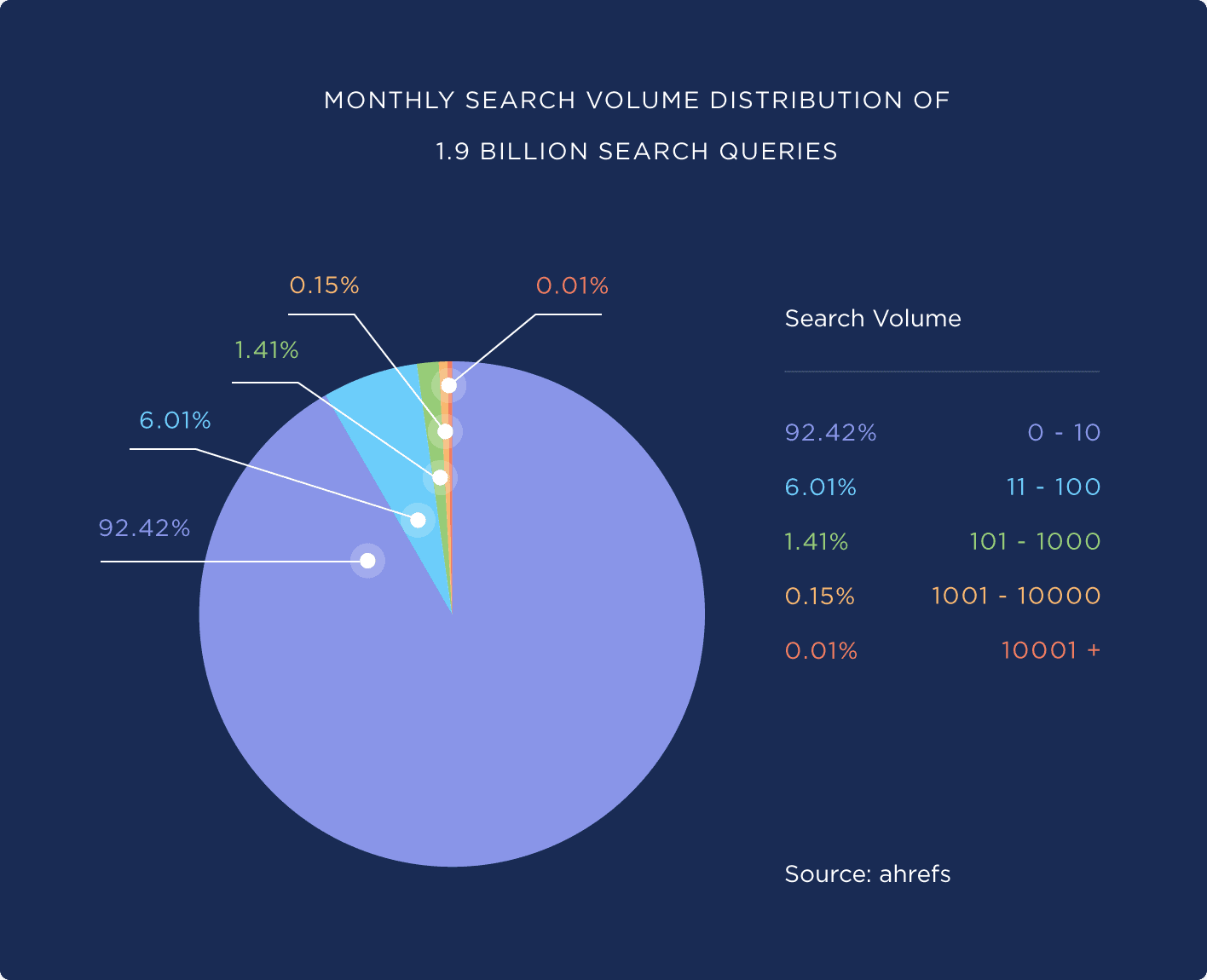
In other words, 92% of all keywords that people type into search engines are long tails.
Why are Long Tail Keywords Important for SEO?
There are two main reasons that you might want to focus on long tail keywords:
Reason #1: Long tail keywords aren’t that competitive
When it comes to SEO, long tails are MUCH less competitive than shorter “head keywords”.
(Which makes them easier to rank for.)
For example, a shorter keyword like “link building” has over 6 billion results in Google:
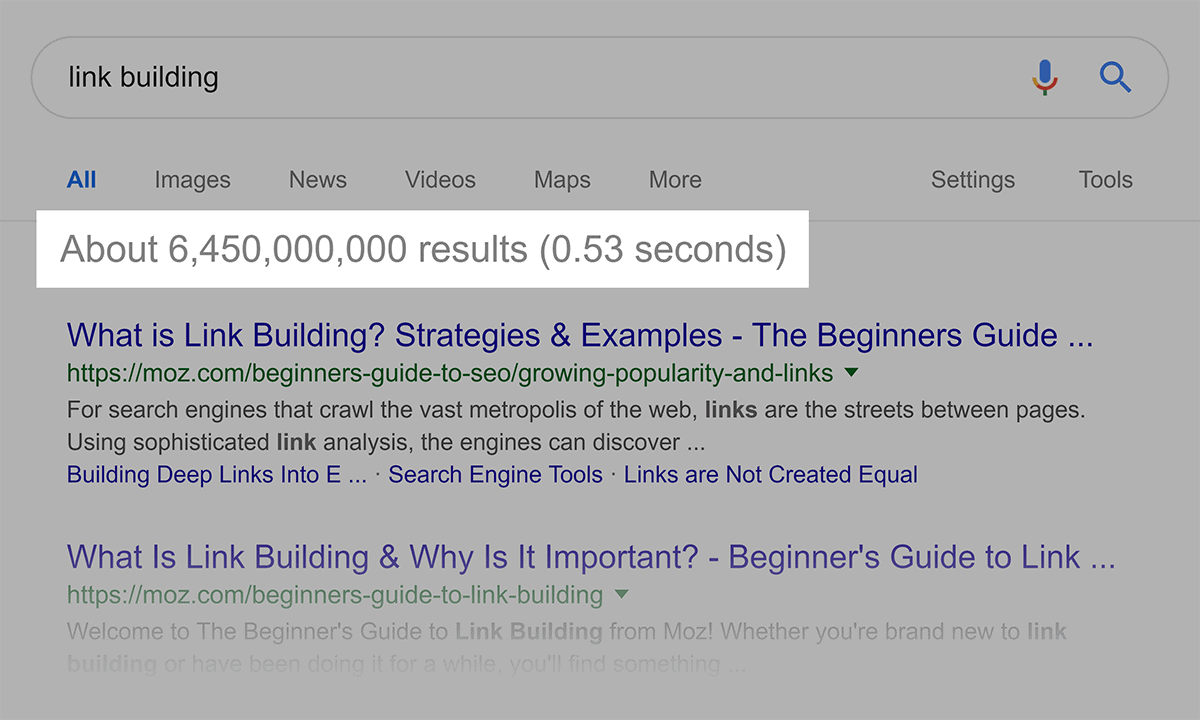
So if you want to rank #1 in Google for that very popular search query, you need to outrank 6 billion other sites.
Yikes.
On the other hand, look at a long tail version of that keyword, like “best SEO link building software”.

That long tail keyword has a lot less competition than the head term “link building”.
This same idea also applies to Google Ads (PPC campaigns). A long tail keyword variation can be cheaper to bid on than super popular head terms.
Reason #2: Long tail keywords can have higher conversion rates
Long tail searches aren’t just longer.
They’re also more specific. They usually have commercial or transactional search intent.
In other words:
People who look for long tail search terms tend to be much further along in the buying cycle compared to folks searching for head terms.
For example, take a keyword like: “keto diet”.
Someone searching for keto diet is probably trying to learn what is it. Or how it works. Which means they’re not ready to buy anything.
But someone searching for a longer version of that term (like “keto diet supplement”) is MUCH closer to making a purchase.
Bottom Line? The traffic that you get from long tail terms tends to convert really well compared to traffic from head terms, as it probably comes from potential customers.
How to Find Long Tail Keywords
Here are 9 ways to find long tail keywords.
1. Google “Searches Related to…”
Ever notice that when you scroll to the bottom of Google’s search results there’s a section called, “Searches related to…”?
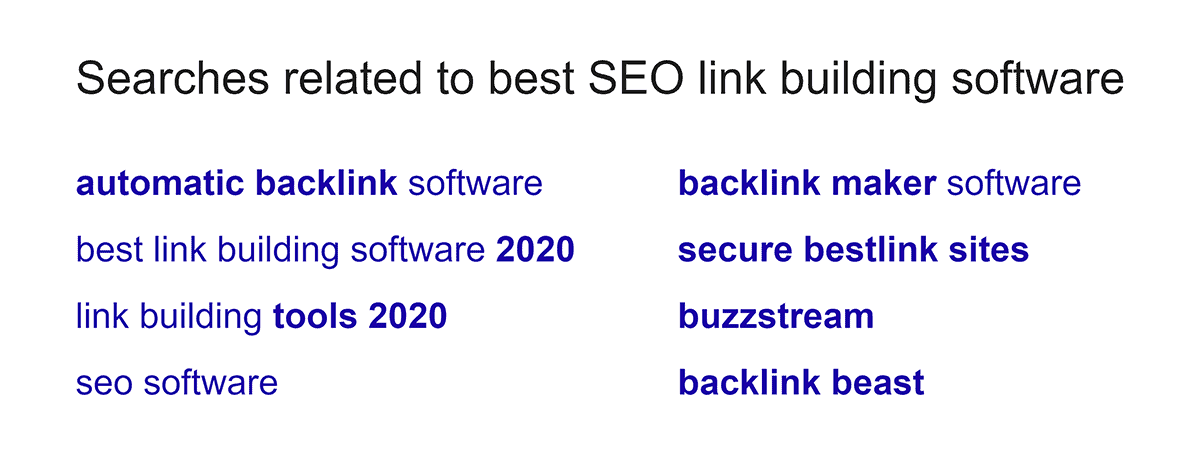
Well this little area is a gold mine for long tail keyword research.
Here’s exactly how to use it:
First, type in a keyword that you want to rank for.

Second, scroll to the bottom of the page. And take a look at the “Searches related to…” for that keyword:

And you’ll get a handful of GREAT long tail terms that you can target in your content.
Nice!
Pro Tip: Take one of the keywords from the “Searches related to…” area and pop that term into Google. Then, check out the “Searches related to…” results for THAT keyword. Rinse and repeat until you have a massive list of content ideas.
2. Semrush Keyword Magic Tool
Another way to find awesome long tail keywords is with the help of Semrush’s Keyword Magic Tool.
Here’s how.
First, enter your main keyword into the Keyword Magic Tool. Let’s say your seed keyword is “SEO strategy.”
Pro Tip: Enter your domain to get a “Personal Keyword Difficulty” score for every keyword.
Next, set the filter for keywords with 4 or more words. This ensures you’re only focusing on long tail keywords:

Semrush will generate a list of long tail keywords that are related, together with metrics such as search volume and keyword difficulty.
It can also calculate personalized keyword difficulty specifically for your domain, as well as estimate the amount of traffic this keyword can potentially generate.
This should help you easily target keywords with decent search volume and low competition.
You can add them to a list or even export them.
3. Answer The Public
Answer The Public is a helpful keyword research tool that generates question-focused keywords.
To use it, type a broad keyword into the field and click “Get Questions”:

The tool will then show you questions that people tend to ask about your topic:
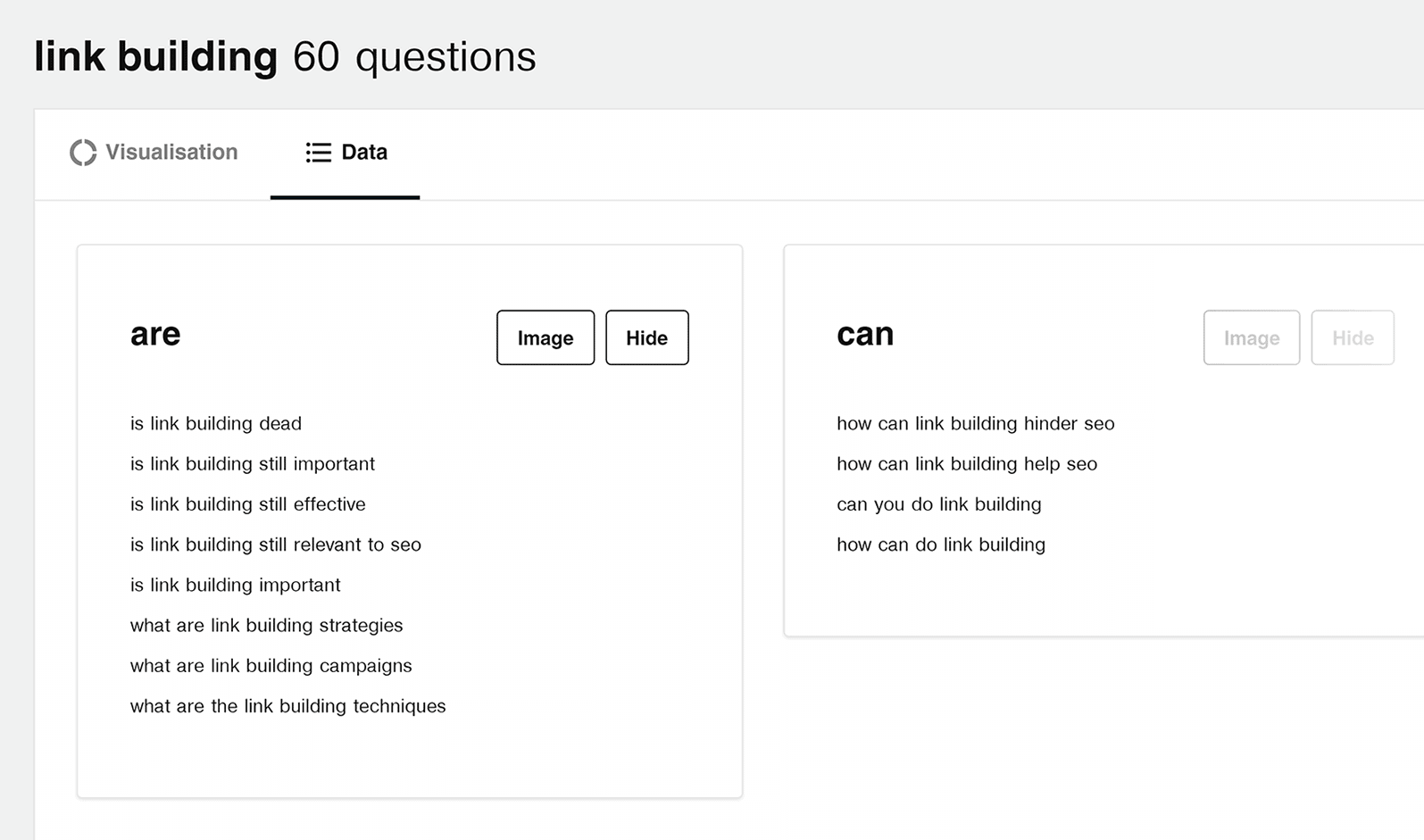
And because question keywords tend to be long, they’re pretty much automatically long tail terms.
You can even sort the data alphabetically:
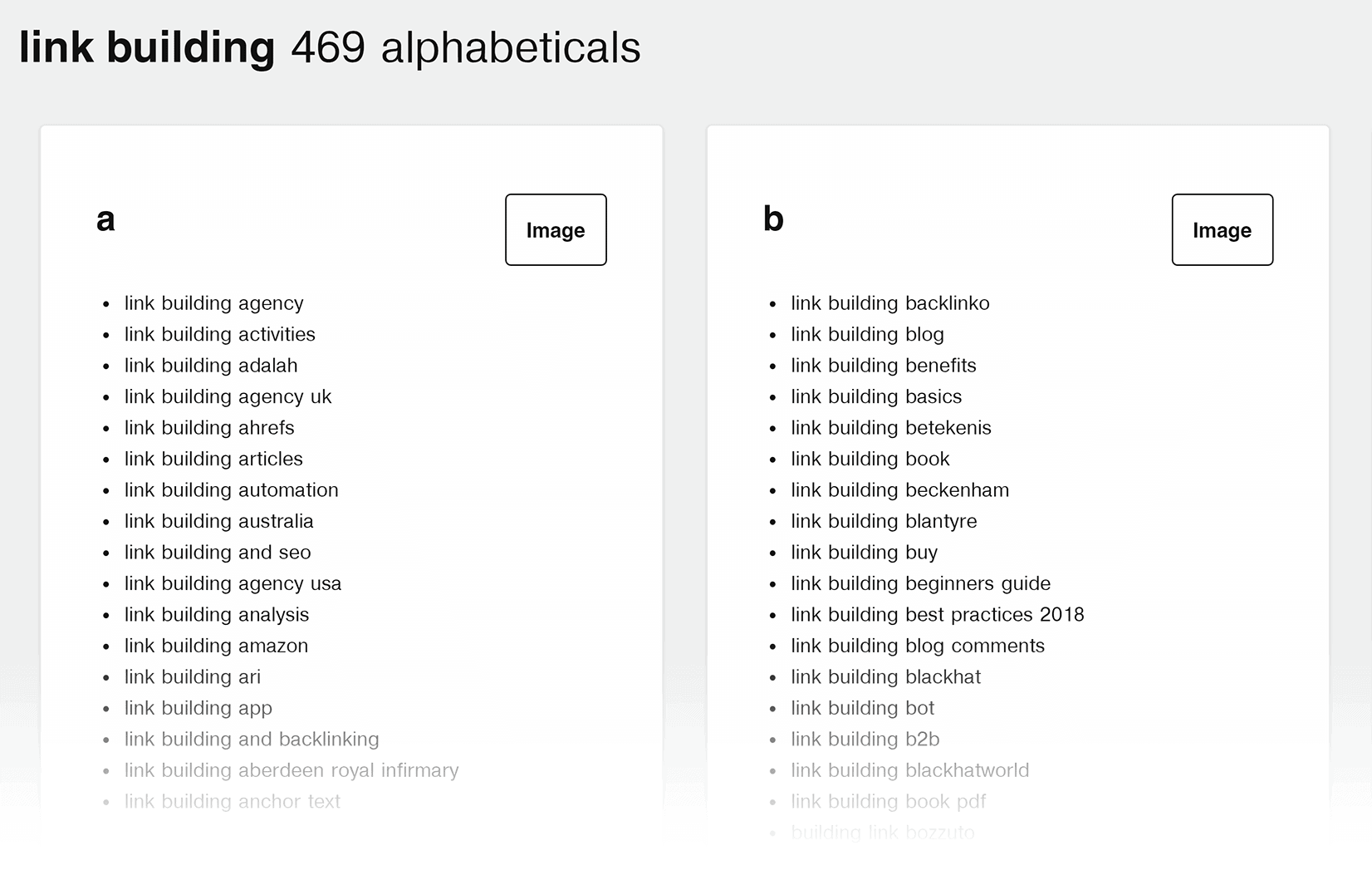
And download the data as a CSV, making your keyword research efforts even easier:

4. Forums and Boards
Forums are one of my all-time favorite places to find new keyword ideas.
Think about it:
Where else can you find hundreds of people asking and answering questions about your site’s topic?
After all, if someone asks a question on a forum you KNOW that there are other people out there searching for that same question in Google.
To use forums for keyword research, head over to a forum where your target audience hangs out. You may know a few of these already.
If not, just use these handy search strings to find them:
- “keyword” + “forum”
- “keyword” + “board”
- “keyword” + “powered by vbulletin”
You can also search for your keyword + discussions:

Then, once you find an active forum, look at the titles of of the latest threads.

Don’t forget to check out the words and phrases that people use in the thread itself.

Easy, right? You can get a bunch of keyword ideas in no time.
5. Google Autocomplete
You’ve probably seen Google Autocomplete suggestions in action before.

And it’s probably my favorite way to find long-tail variations when doing keyword research.
Why?
Because the suggestions that you get come straight from Google.
To use the Google Autocomplete feature for keyword research, you can JUST enter a seed keyword in the search box:

OR
You can type in a keyword plus a letter:

The only problem with this keyword reserach method is that typing in “keyword a”, “keyword b” etc. is a GIANT pain.
Fortunately, long tail keyword generators like Ubersuggest and keywordtool.io both scrape Google Autocomplete data for you.
They both work pretty much the same way.
Just enter a seed keyword and click “search”:

And the tool will spit out hundreds of suggestions:

6. Soovle
Soovle is a free tool that collects keyword suggestions from Amazon, Wikipedia, Ask.com, and YouTube.

Which means you can uncover untapped terms that are SUPER hard to find with any other keyword tool.
(Not to mention that the fact that you get keyword and content ideas from sites that your competition probably overlooks.)
With that, here’s how to use it:
First, head over to Soovle and enter a broad keyword into the search field.
For example, if you were looking for coffee-related keywords, you could use the keyword “coffee”:

Soovle will automatically display suggested results from different websites:

You can also download the results in a CSV file by clicking the download icon in the top left corner of the page:

Very cool.
7. People Also Ask Boxes
This is another easy way to do keyword research.
First, search for a keyword in Google search.
And keep an eye out for a “People also ask…” box in the SERPs.

These are questions that people ask around the topic of the keyword you typed in.
And if you expand one of the questions, you see an answer… plus Google will show you even MORE questions, helping you discover even more relevant keywords.
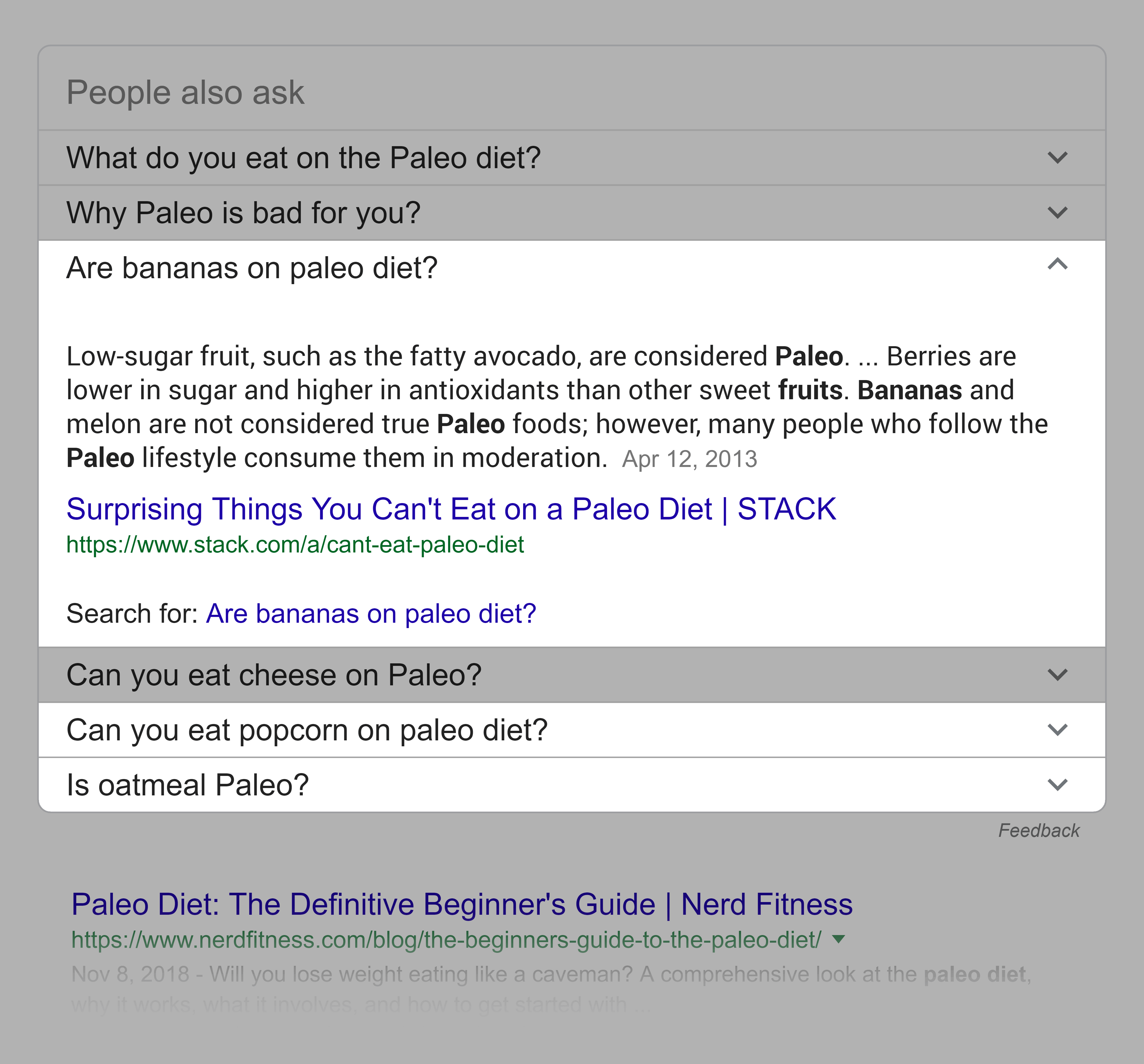
8. Google Search Console Performance Report
Sometimes the best keyword is one that you already rank for.
What do I mean?
If you’re like most people, you have a handful of pages sitting on the 2nd, 3rd or 4th page of Google.
And sometimes you’ll find that you rank in Google for long tail keywords that you’re not even optimizing for.
And when you give these pages some extra SEO attention, they’ll usually hit the first page within days or weeks.
You can easily find these 2nd and 3rd page keywords in the Google Search Console (GSC).
First, login to your GSC account and go to the Performance Report.
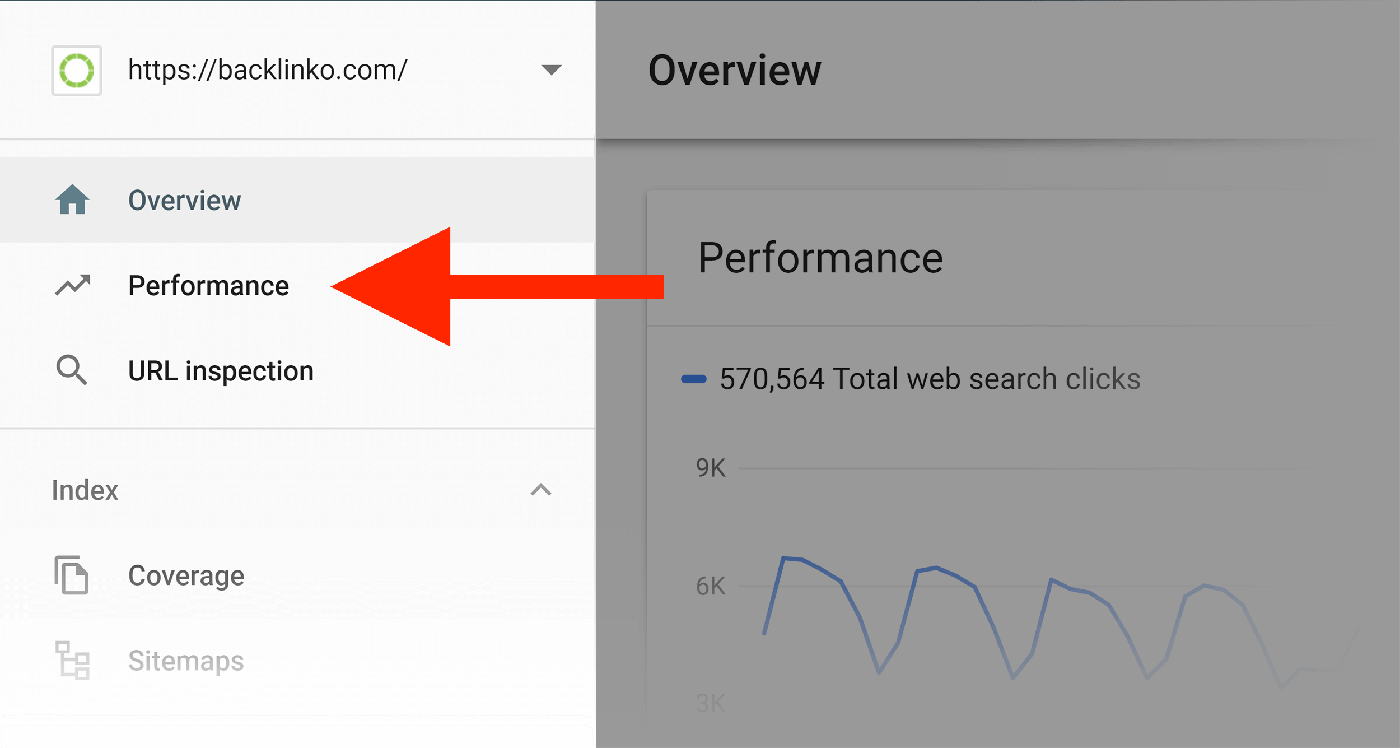
Scroll down until you see “Queries”.

These are keywords that you rank for on Google’s first page.
To find 2nd and 3rd page keywords, sort the list by “Position”:

And set the number of rows to show to “500”.
Keep scrolling down until you start to see positions 10-15.
Then, take a look at the keywords that are ranking in those positions:
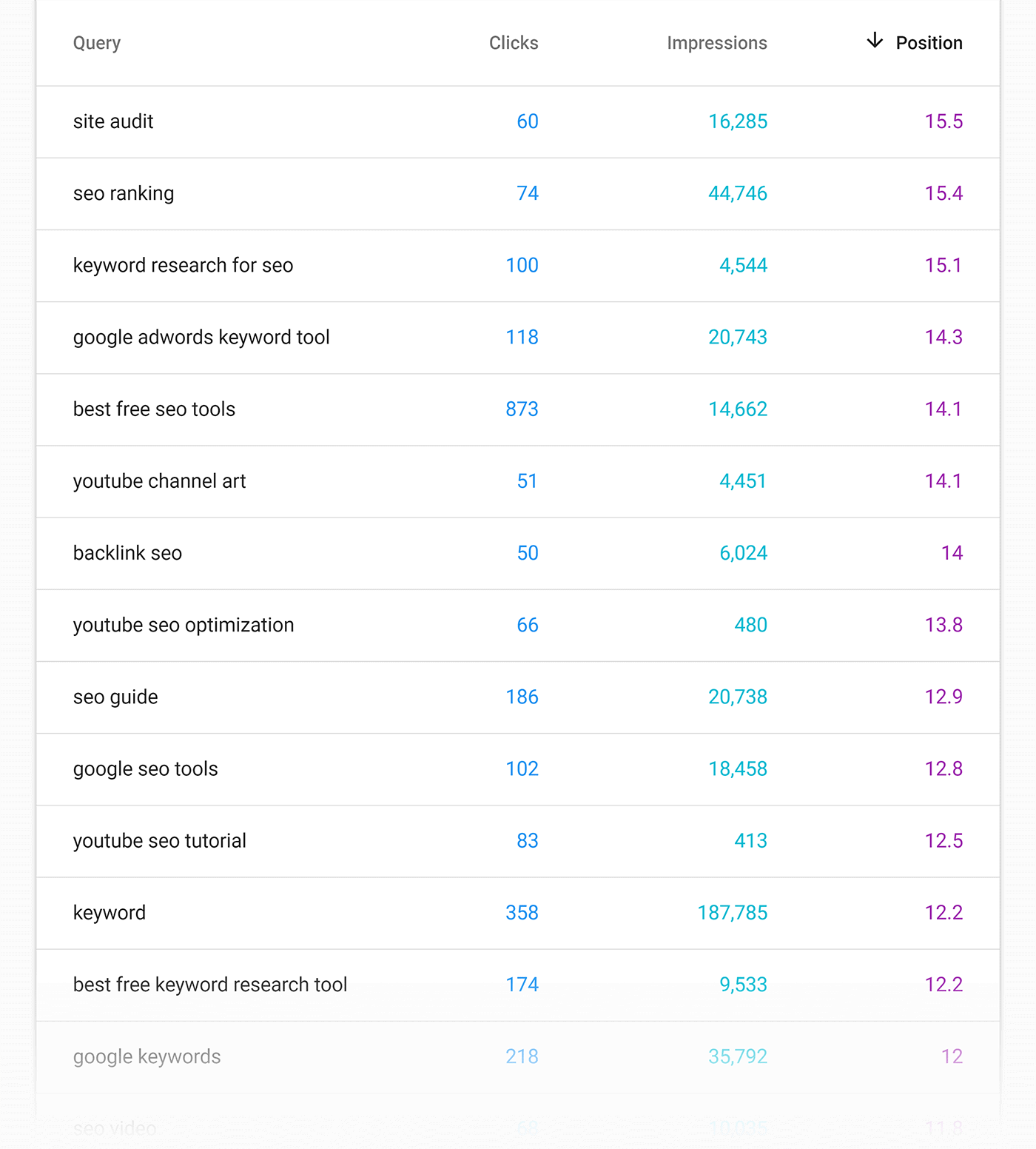
Put any promising keywords into the Google Keyword Planner to check their search volume.
If you find a keyword that makes sense for your site (and has decent search volume) click on that keyword.
And click on the “pages” tab:
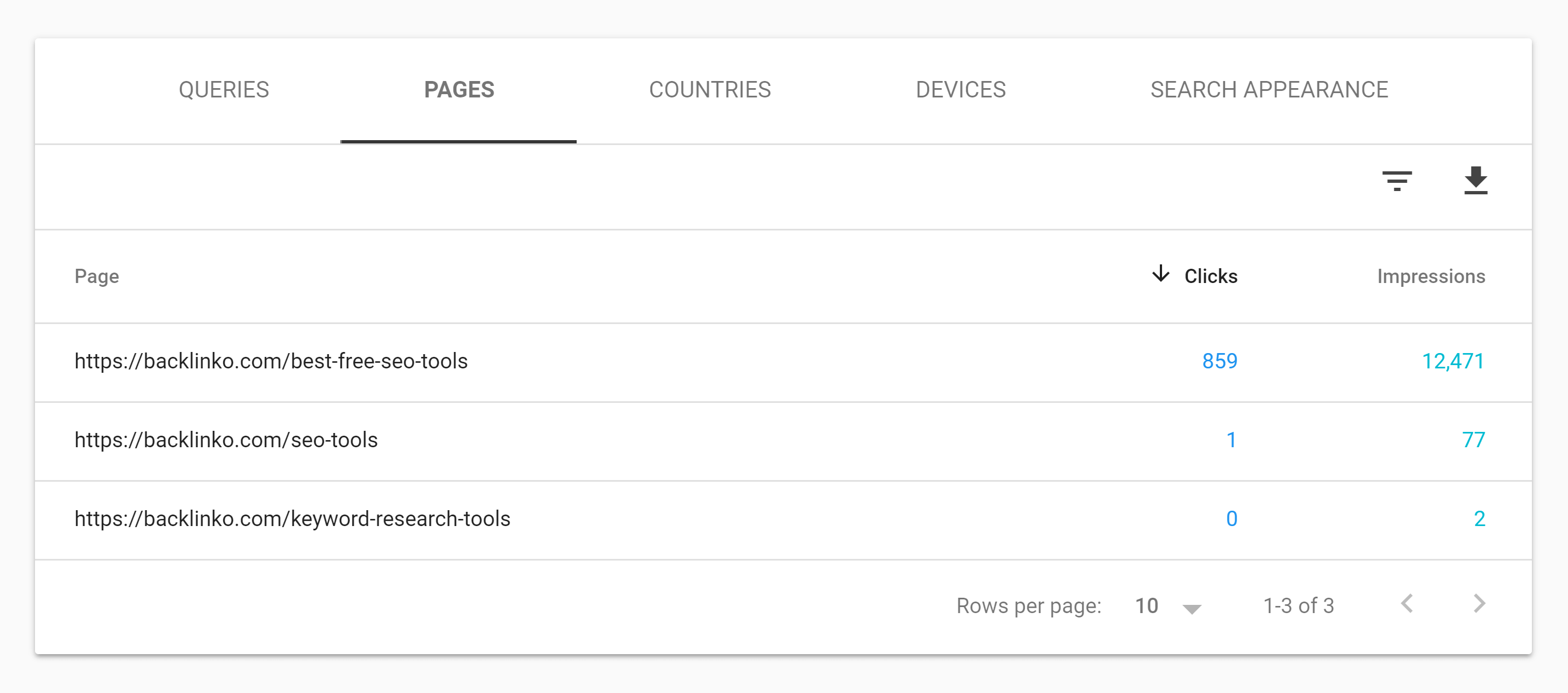
This will show you the page on your site that currently ranks for that keyword.
9. Google Trends
Google Trends is one of my all-time favorite keyword research tools.
About to kick off an SEO campaign? You definitely want to know whether or not interest in your keywords is growing (or falling).
Here’s how this works:
First, head over to Google Trends, and enter the keyword you want to rank for into the search field:

The tool will show you “interest over time” based on search volume and news headlines:

In this example, search volume for this term is pretty stable.
But for other keywords, like “Snapchat”, interest picked up suddenly and has now tapered off:

And other terms, like “Google Keyword Tool”, have a steady down trend:

The best case scenarios is when you find a keyword (like “keto diet”) that’s trending up.

Pro Tip: Scroll down to “Related Queries”:

Most of the keywords listed under “Queries” are little-known keywords that you won’t see in most other keyword research tools.
10. Quora
Quora is an extremely popular crowdsourced Q&A site. But it can also be a great site for keyword research.
It’s similar to Yahoo! Answers. But with Quora, people’s responses are actually helpful 🙂
To use Quora, you need to create an account.
Once you’ve logged in, enter a broad keyword into the search bar at the top of any page:

Like with forums, Quora will show you the most popular questions on that topic:
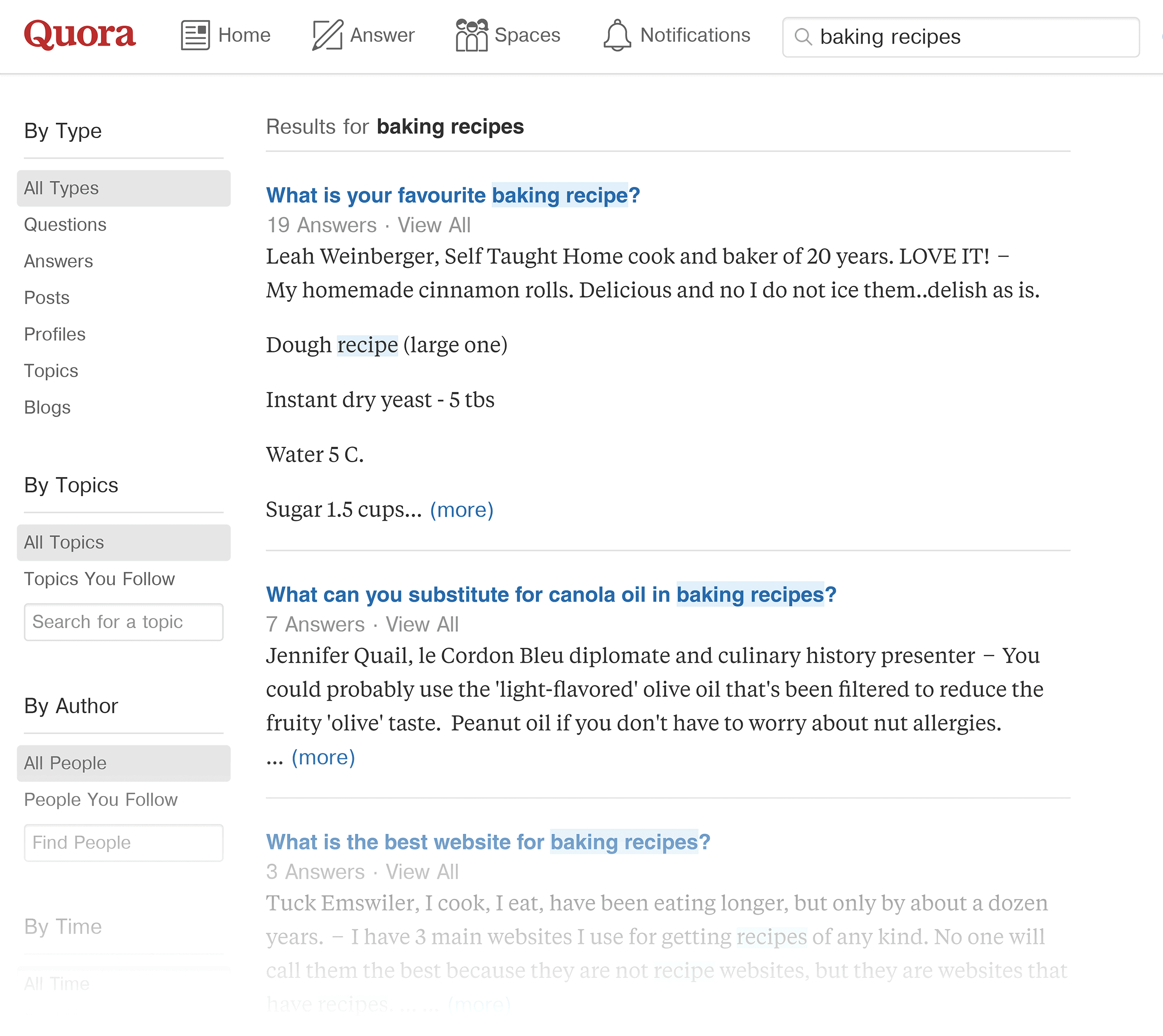
Some of the questions will be high-volume keywords that you can copy and paste into your list of potential keywords.
And others can help you brainstorm new keyword ideas in your niche.
For example, in our baking example above, this question is probably too long to be a popular keyword:

But when I entered the shortened version of the question, “bake without eggs”, into the Google Keyword Planner, I found a list of keywords that could easily be used as the topic of a high quality article. They also have relatively high search volume:
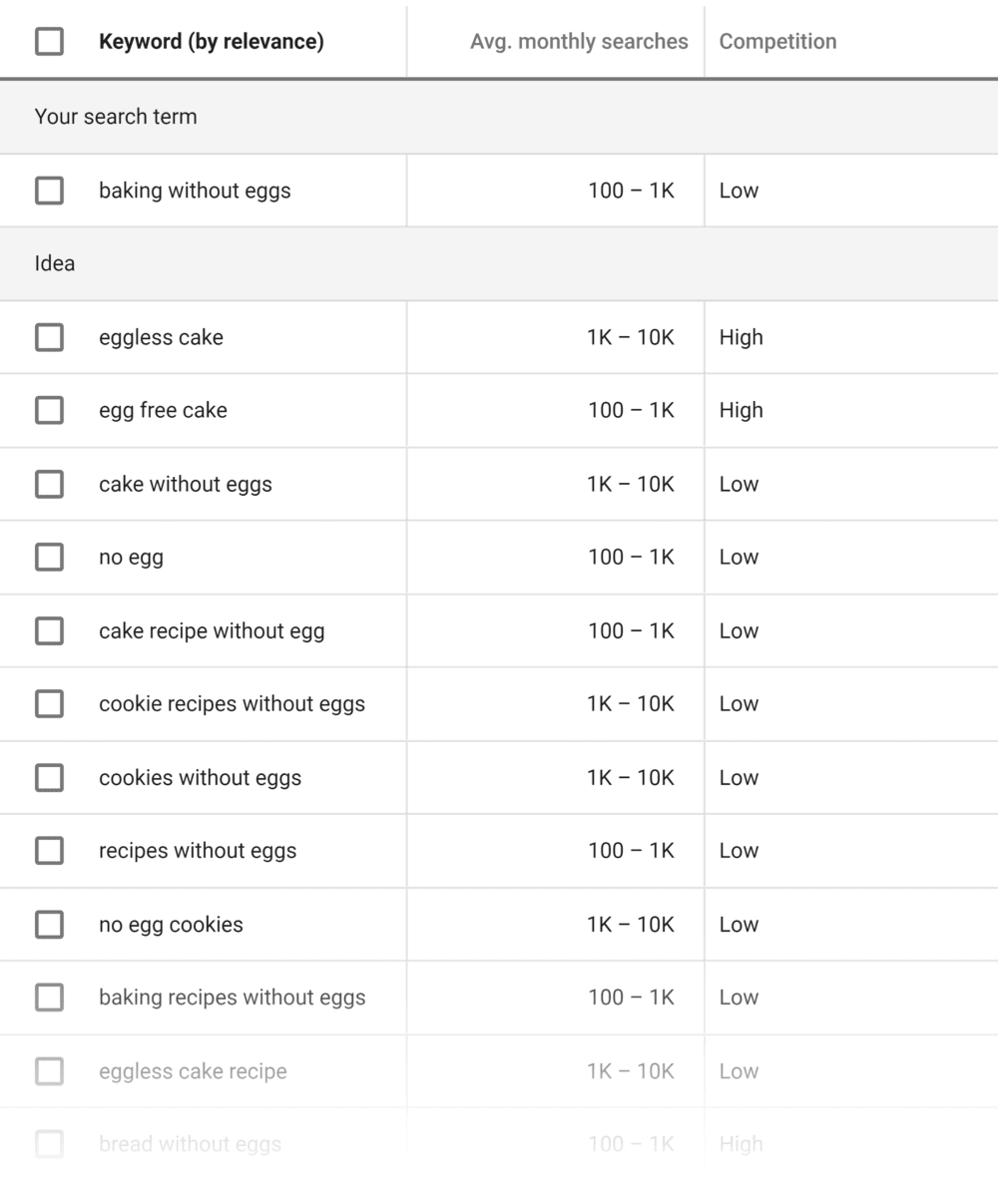
This is where Quora shines: giving you laterally related keyword and topic ideas that you may not have thought of on your own.
Bonus: Use ChatGPT
Well, you actually never thought we could leave this amazing trend! Using ChatGPT for SEO continues to gain traction. Click on our guide to learn the best practices to leverage this innovation for your SEO.
How to Use Long Tail Keywords
When it comes to using long tail keywords in your content, you have two options:
Option #1: Create a Piece of Content Optimized Around That Term
Your first option to create a new blog post that’s optimized around the long tail keyword that you just found.
For example, some time ago I found the long tail keyword: “how to get more YouTube subscribers”.
And I created a post that was optimized around that long tail term.

Because that keyword wasn’t that competitive, it quickly cracked Google’s first page.

(And it currently ranks in the top 5 for my target keyword.)
The downside of this approach is that you need to pump out A LOT of content.
For example, the keyword “how to get more YouTube subscribers” only gets around 3k monthly searches.
Even if my post got 100% of the clicks from people searching for that term (which is impossible), that post would only increase my traffic by 3k visitors per month… MAX.
And in reality, I probably only get 500-700 clicks per month from that keyword.
So to make this approach worthwhile, I’d need to bang out dozens (or even hundreds) of blog posts optimized around long tail terms.
Option #2: Sprinkle Long Tail Keywords Into Your Content
Your other option is to optimize your page around a short tail or “Medium tail” keyword. Then, incorporate long tail keywords into your content.
For example, I published this list of my favorite free SEO tools.

Obviously, I used on-page SEO to optimize my blog post around my main keyword: “free SEO tools”.
But I also sprinkled in long tail keyword phrases into this piece of content.

And because I used a bunch of long tails in my post, it currently ranks in Google for 4.4K different keywords:

Learn More
Advanced Keyword Research Tutorial (5-Step Blueprint): Learn how to find long tail keywords, short tail keywords and everything in-between in this video tutorial.
How to Choose Keywords for SEO: So you’ve found a bunch of long tail keywords. Now what? This guide will help you separate the wheat from the chaff.
On Page SEO – 9 Actionable Techniques That Work: This video will show you how (and where) to use long tail keywords in your content.
